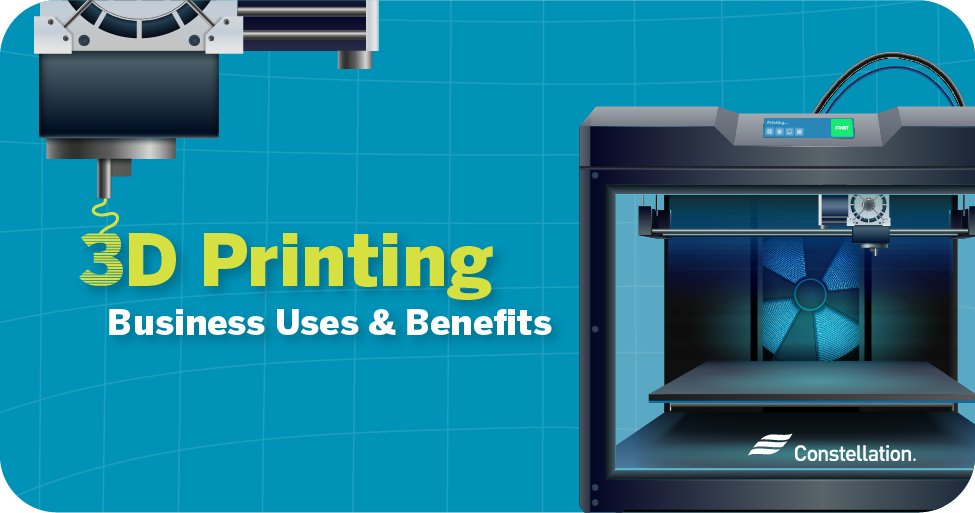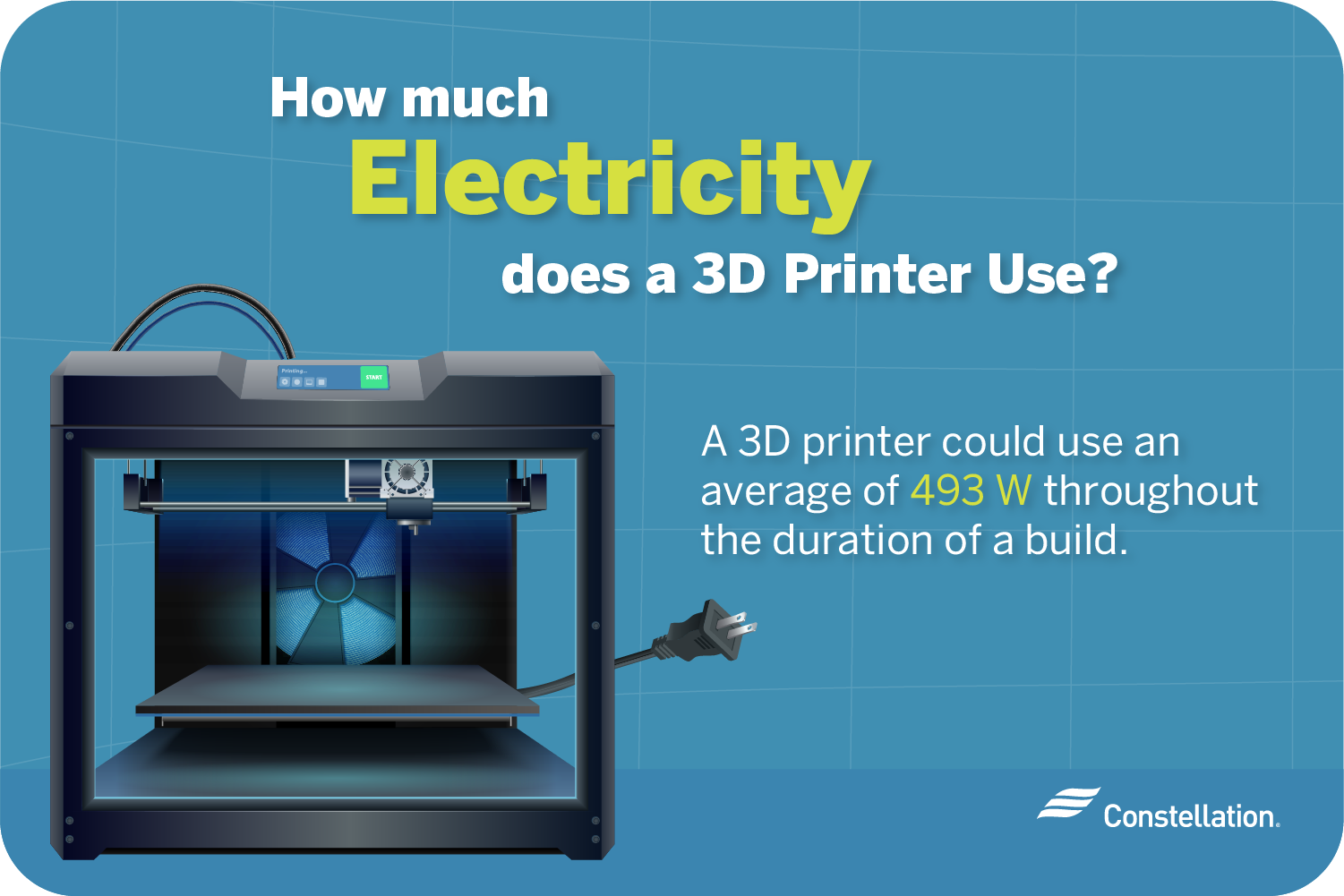
- Category:
Small Business Energy Savings -
Last updated:
February 11, 2022
3D Printing: Business Uses and Benefits
The business uses of 3D printing are growing year by year. Once a niche technology, 3D printing for small businesses is becoming mainstream. It is definitely technology you will want to keep an eye on as 3D printers become more affordable–and as they become more adaptable. These devices are a promising technology fueling digital transformation strategies for small businesses.
What is 3D printing and how does it work?
A 3D printer works by forming materials according to computer designs that are fed into it. The most common 3D printers spurt melted plastic from nozzles that carefully layer the material, building an object from the bottom up. Besides plastic, devices can print using composite powders, resins, metals, carbon fiber and more. Engineers continue to explore new materials and methods to advance 3D printing capabilities and 3D business applications.
Benefits of 3D printing for small businesses
The benefits of 3D printing for small businesses are significant across a number of aspects. These advantages are just the beginning for 3D printing’s future.
- Use less resources. A 3D printer uses the exact amount of material needed to create an object. Traditional machining cuts away material to create a part, wasting material with each part manufactured.
- Customize products. Because you aren’t chasing economies of scale, you can create single objects to fit specific customer needs.
- Save time and cut start up costs. Cycles of prototyping eat up time and money. The prototypes that don’t work are useless. The effort made to create them becomes sunk costs. One of the most promising 3D printing business uses is in rapidly developing models and options for testing.
- Simplify production processes. Traditional manufacturing is often a multi-step process that uses many machines and devices. With 3D printing, one machine does it all.
- Streamline repairs. Imagine how much down time you could eliminate if you could print spare parts when breakdowns happen?
- Create production tools. Other 3D printing business applications include printing jigs, molds and other fixtures used in manufacturing. Creating these on-the-fly increases agility and lowers costs.
- Limit outsourcing needs. The ability to use 3D printing across all of these applications makes your business more self-sufficient. When you can eliminate outsourcing business processes, your company can retain more revenue.
5 business applications of 3D printing
These applications are ways to capture the benefits of 3D printing for small businesses. As more companies experiment with using 3D printers, they’re discovering new and valuable business uses for the technology.
1. Develop prototypes
Many businesses go through lengthy and potentially expensive prototyping cycles as they design, test, and perfect products and parts. Prototypes also play a key role in marketing. 3D printing can speed these cycles and do so at a lower cost.
2. Create low-volume or limited-edition products
The ability to affordably create products one at a time makes it possible to service niche markets profitably. 3D printing also lets you create low production run products that can command a higher price and deliver a better profit margin.
3. Expand your product design possibilities
With lower costs and greater speed, you can experiment more, creating and testing multiple design ideas. You’ll be able to apply what you learn nearly instantly on the next evolution of your ideas.
4. Reproduce parts for your business equipment
With supply chains under pressure and with the challenges of getting parts for aging machinery, creating replacements on demand is one of the 3D printer business uses that can really pay off. You can lower your down time and extend the life of your capital equipment.
5. Speed up your manufacturing process
By eliminating part tooling and shortening prototyping cycles, you can speed manufacturing. You can also cut costs and steps by simplifying production processes. Because 3D printing is highly exact, you can reduce defect rates that slow you down.
How much electricity does a 3D printer use?

Beyond the cost of the device and its inputs, the electricity a 3D printer uses will be one of the largest costs to consider.
In one study, a 3D printer used a total of 10.3 kWh of energy to complete a 21-hour build. Throughout the course of the build, it used an average of 493 W of power. But your 3D printer’s energy consumption may differ based on a number of factors. For example, the item you’re printing, the materials you’re using, and the size of your 3D printer will all determine if it will have a substantial effect on your small business’s energy consumption.
Gain a competitive advantage with 3D printing technology
The expanding array of business uses of 3D printing makes the technology compelling for many small businesses. Today, machines can be pricey, however small business equipment loans can put them within reach.
Given their potential, the value a 3D printer can provide may make the investment a profitable one. Early adopters that learn the ins and outs of the technology and that experiment and find the best applications for their situations will have a serious competitive edge. Now is the ideal time to start exploring how this technology can benefit you.




